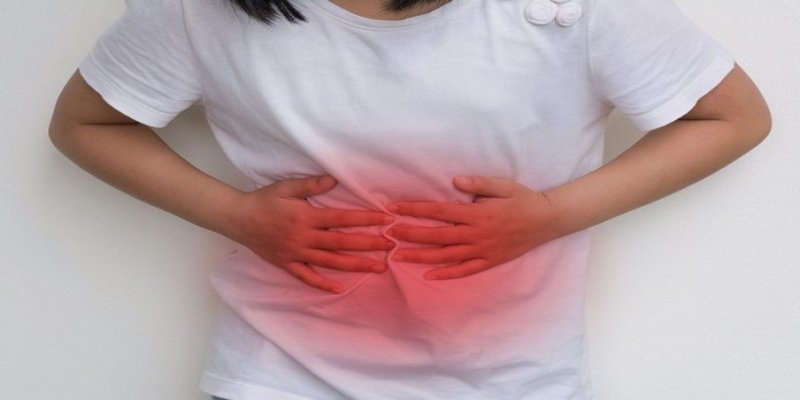Gallstones in Children in India
2019-09-13 / RG STONE HOSPITAL / Gall Bladder Stone

Gall Bladder is a pear-shaped helping digestive organ located in the right upper abdomen. The functions of the gall bladder include storage, concentration and release of bile into the intestine by simultaneous contraction of the gall bladder.
Gall bladder disease is the commonest digestive problem that may require hospitalization. Stones in the gall bladder (Cholelithiasis) are quite common in adults, with the prevalence in India being 3 -5%. While gallstones most commonly occur in people above 40 years of age; children are increasingly being affected.
The incidence of gall stones is seen in 2% of children population. The prevalence is still high among obese children (5%). Boys and girls are equally affected in early childhood. However, after puberty, the frequency is significantly higher in females than in males and is similar to the adult ratio of 4:1 female predominance. There may be a hormonal link to this with changes during puberty in girls increasing the production of cholesterol in blood.
Prevalence is 7 times more frequent in North India than in Southern regions. The factors specifically significant appear to be differences in items of food and water. The composition of gallstones is also different in different parts of the country. In North & East India, gallstones are mostly cholesterol stones and mixed stones; in South India, pigment stones are common.
When gallstones occur in younger age group, they may be composed of black pigment, cholesterol, calcium carbonate, protein - dominant, or brown pigment stones. Typically, only one type of stones form at any given time in life.
Gall stone incidence in Infants (less than 2 years) account for 10 % of the paediatric population. The symptoms in this age group include cholestatic jaundice, transient acholic stools, abdominal pain, and sepsis.
- Children (2 - 14 years of age) with gallstones account for almost 40 % of the cases and present with typical biliary symptoms including right upper quadrant or epigastric pain with or without nausea, vomiting and fat intolerance; or non-specific symptoms (25 %). Around 20 % cases remain asymptomatic; and around 5 – 10 % cases get complications due to acute cholecystitis, pancreatitis or cholangitis.
- Adolescents (14 - 18 years of age) account for almost 50 % of cases and present with same complaints as children but right upper quadrant pain and fatty food intolerance are more severe. Some cases may remain asymptomatic and get diagnosed incidentally.
Gallstones should be considered in case of nonspecific, intermittent abdominal pain in children. Ultrasonography is the study of choice in patients with uncomplicated cholelithiasis along with some blood tests.
Treatment for simple cholelithiasis is purely symptomatic. Spontaneous resolution of gallstones is frequent in infants; so period of observation is recommended. If gallstones in a child do not cause symptoms, treatment may not be needed. Removal of the gall bladder (Cholecystectomy) is useful in children with typical biliary symptoms but is not recommended in those with non-specific symptoms.
Laparoscopic cholecystectomy is currently the gold standard in the treatment of symptomatic cholelithiasis. It has been proven to be safe and effective in children, with a low rate of post operative complications.
After the surgery, the patient can lead a normal life since, while the gallbladder is useful, it is not essential as the liver will still produce bile. It is absolutely okay not to have a gallbladder. In absence of the gallbladder, the bile simply flows from the liver directly into the intestine. The patient is able to eat normally and continue with normal activities. Most patients do not even face any problem. Occasionally, some patient may suffer mild side-effects such as bloating, diarrhoea and indigestion; though this can be avoided by excluding certain foods such as fatty meals.
Diet with less of fatty foods and proper weight control may be effective in preventing cholesterol stones. Increase in exercise reduces symptomatic gallstones in by approximately 20% irrespective of the gender.
By RG Hospitals
Read more about : Gall Bladder Stone Treatment & Procedure
Categories
Hernia Repair
Appendicitis
Piles
Urological Treatment
Hernia treatment
Enlarged Prostate (BPH)
Gall Bladder Stone
Urinary / Kidney Stone
Vitamins
Indian Health Care System
Exercise
Obesity
Female Urinary Incontinence
Single Incision Laparoscopic Surgery (SILS)
Kidney Cancer
Bladder Cancer
Ovarian cancer
Nephrology
Bariatric Surgery
Kidney Function Test
Female Urology
Radiation Therapy
Alcoholic Fatty Liver
Liver disease
Gastroenterology
Kidney Disease

